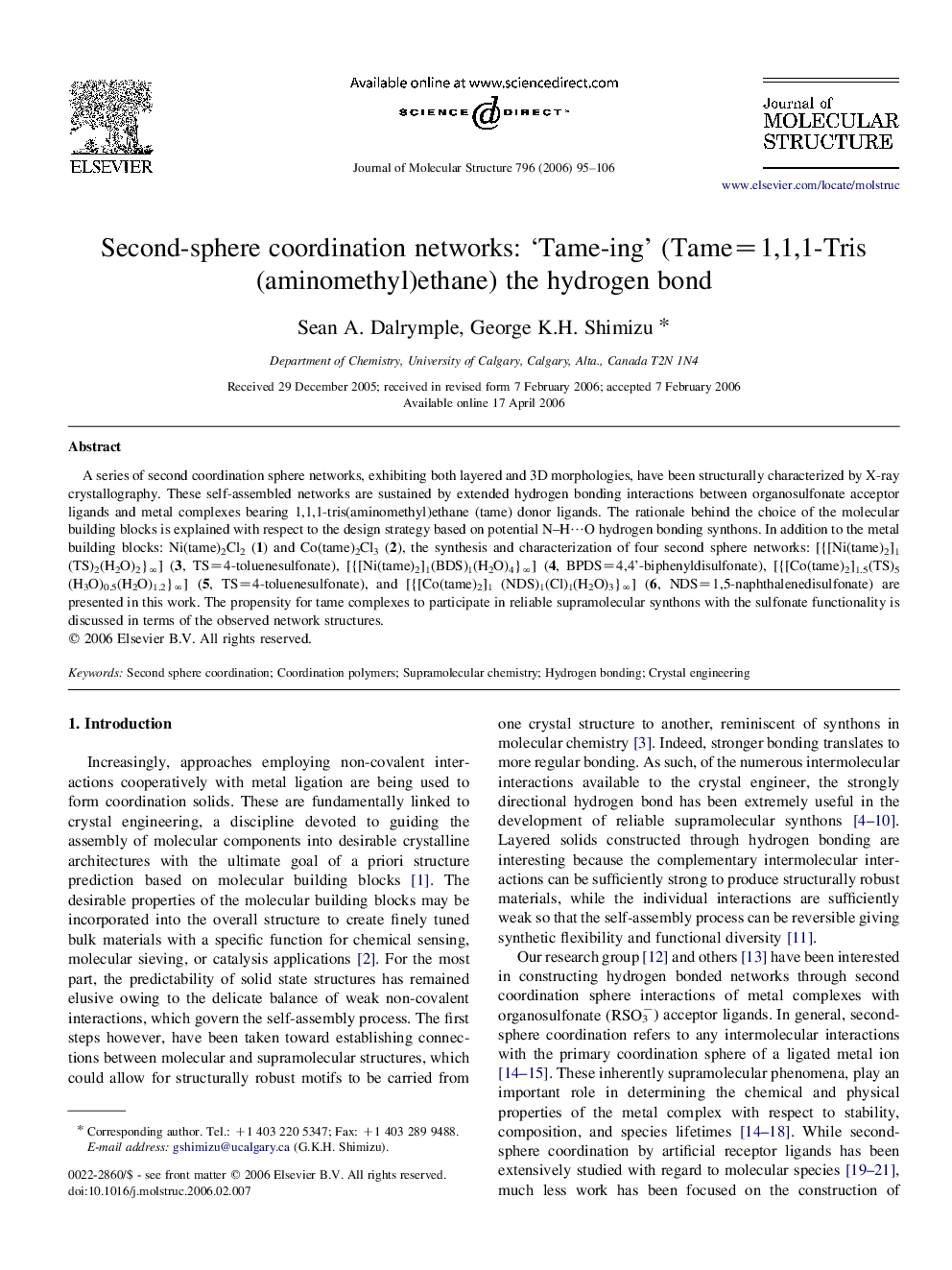| Article ID | Journal | Published Year | Pages | File Type |
|---|---|---|---|---|
| 1407479 | Journal of Molecular Structure | 2006 | 12 Pages |
A series of second coordination sphere networks, exhibiting both layered and 3D morphologies, have been structurally characterized by X-ray crystallography. These self-assembled networks are sustained by extended hydrogen bonding interactions between organosulfonate acceptor ligands and metal complexes bearing 1,1,1-tris(aminomethyl)ethane (tame) donor ligands. The rationale behind the choice of the molecular building blocks is explained with respect to the design strategy based on potential N–H⋯O hydrogen bonding synthons. In addition to the metal building blocks: Ni(tame)2Cl2 (1) and Co(tame)2Cl3 (2), the synthesis and characterization of four second sphere networks: [{[Ni(tame)2]1(TS)2(H2O)2}∞] (3, TS=4-toluenesulfonate), [{[Ni(tame)2]1(BDS)1(H2O)4}∞] (4, BPDS=4,4'-biphenyldisulfonate), [{[Co(tame)2]1.5(TS)5(H3O)0.5(H2O)1.2}∞] (5, TS=4-toluenesulfonate), and [{[Co(tame)2]1 (NDS)1(Cl)1(H2O)3}∞] (6, NDS=1,5-naphthalenedisulfonate) are presented in this work. The propensity for tame complexes to participate in reliable supramolecular synthons with the sulfonate functionality is discussed in terms of the observed network structures.
